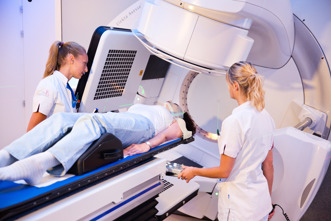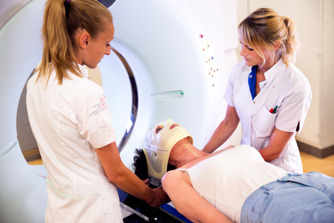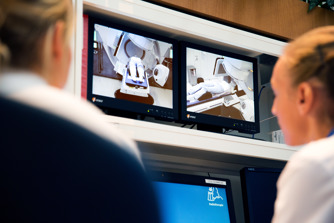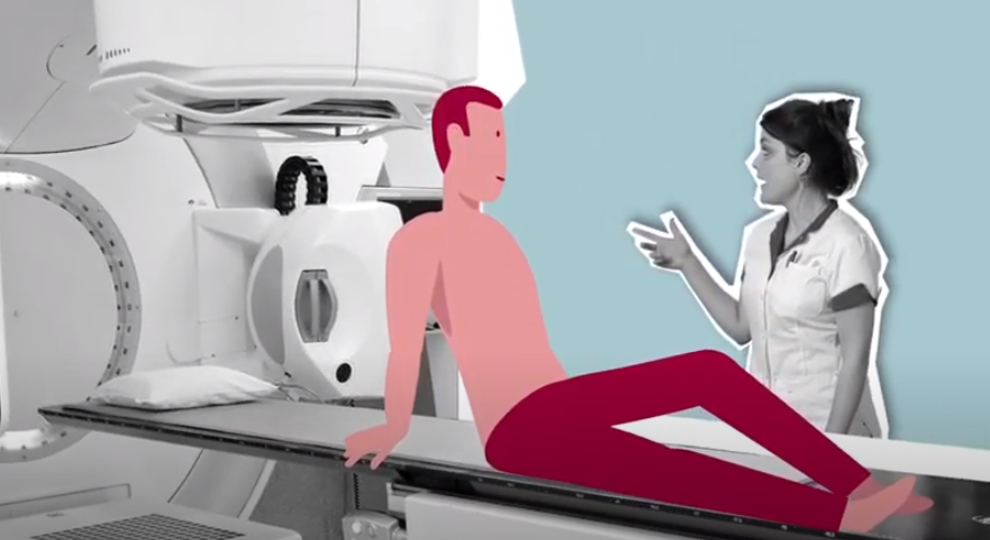Radiotherapy for brain tumors
Brain tumors can develop in the brain tissue (primary brain tumors) or spread from elsewhere in the body. We call those brain metastases.
Primary brain tumors
Depending on the size and location of the tumor, your specialists (neurologists and neurosurgeons) will look into the best treatment plan for you. Radiotherapy is often an important part of the treatment for brain tumors (gliomas). Depending on your personal situation, we will discuss a radiation treatment plan with you. We can deliver radiation to the tumor after surgery or after a diagnostic biopsy, or to a tumor that started growing after the treatment. The techniques that we use - the most advanced radiation and imaging techniques such as MRI - minimize damage to the surrounding tissue. We also have trials running at our department and hospital, researching new techniques and treatment methods that could further improve glioma treatment. Your treatment team will discuss these studies with you if you qualify for participation.
Brain metastases
A tumor elsewhere in the body that has spread to the brain is called a brain metastasis. Radiotherapy aims to treat the symptoms, shrink the tumor, halt its growth, or make sure that all tumor cells in the area are destroyed. The external beam radiation treatment will be delivered to the entire brain, or the tumor’s location only (stereotactic radiosurgery). We always use the latest techniques in our treatment and use a linear accelerator and Gamma Knife in the delivery of our external beam radiotherapy. We also conduct trials at our department and hospital, researching new techniques and treatment methods that could further improve glioma treatment. Your treatment team will discuss these studies with you if you qualify for participation.
 nl
nl
 Nederlands (Nederland)
Nederlands (Nederland)
 English (United States)
English (United States)




